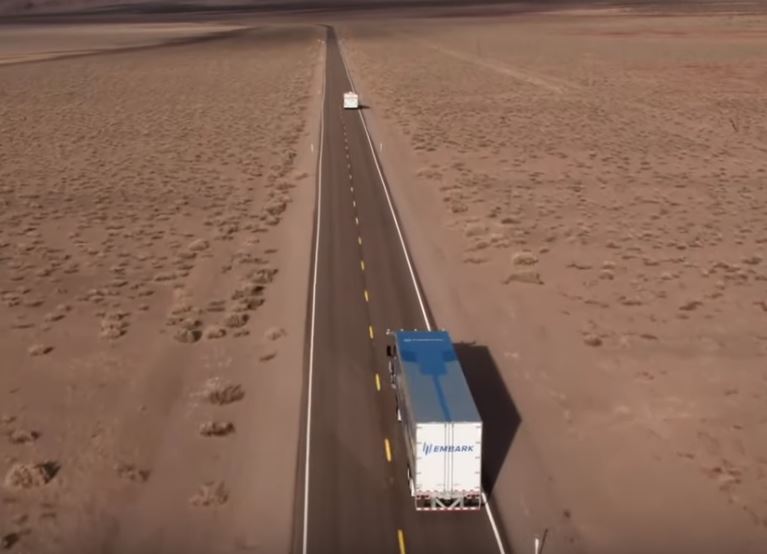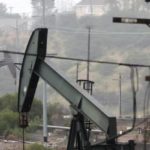USPS Testing Series of 1,000-Mile Mail Hauling Trips
From CCJ
The United States Postal Service (USPS) has contracted with autonomous truck startup TuSimple on a series of 1,000-plus mile trips, hauling mail between the Postal Service’s Phoenix, Ariz. and Dallas, Texas distribution centers.
Equipped with a network of lidar, radar and cameras that enable SAE Level 4 autonomous driving, each truck will also have a safety engineer and driver on board to monitor vehicle performance and to ensure public safety for the duration of the five round trip, two-week pilot test that kicks off today.

TuSimple Head of Business Development Vivian Sun says teams of drivers will also be staged along the routes for coordinated swaps so all drivers remain Hours of Service (HOS) compliant. Even though the human are not actively driving the trucks once they reach the highway they are still subject to HOS regulations, including maximum daily driving times and mandated rest breaks. Among the goals of the the test, Sun says, is to push the autonomous-enabling equipment beyond the legal capabilities of its human driver to cut delivery turn times, so trading out drivers for another with a fresh set of hours was necessary. Sun says the only planned stops for the trucks are for fuel and to facilitate the driver change.
“In the future, the benefit of the self-driving truck is that some of this driver swapping won’t have to happen,” she says, adding the multi-truck test run is also a stress test for the TuSimple platform. “Running a solo truck a couple hours is a different animal than running multiple trucks over multiple hours.”
How Amazon Demand Drives Autonomous Truck Tech – CNBC
In advance of today’s mail run, TuSimple had to develop high definition maps by pre-driving the route multiple times in a vehicle equipped with sensors that collected data from point-to-point about the terrain.
The freight that flows along I-10 corridor accounts for 60 percent of the total economic activity in the U.S. and, citing an already strong customer demand for runs between Arizona and Texas, TuSimple expects it to be a central route for the company. TuSimple has several prototype vehicles currently making for-hire deliveries and plans to expand its fleet to 50 by year’s end.
This new route is a milestone for TuSimple as the company scales its autonomous operations outside Arizona and marks its autonomous debut into Texas.
“This is a very complex and comprehensive route,” Sun says, adding that TuSimple hopes to glean mountains of data while also testing the functionality of the low-light camera system the company debuted in March. “One of the things we have to conquer is we have to do very well during night driving and early mornings when the sun is very low and shining directly into the camera … and any situations when light situations vary.”
The low-light camera system – affixed to a truck traveling from Dallas to Phoenix and another from Phoenix to Dallas – will face various lighting challenges as it transitions from urban roads with plenty of street lights to desert highways that feature few to none.
“If we can handle this complex issue,” Sun says, “we can do a lot more in the future.”
Sun says long-haul routes with short turnaround times, like the 22 hour mail drop, are suited for technologies that enable driverless trucks because they are normally accomplished by team drivers – a population that is challenging to recruit due to overnight driving requirements and the need to share close quarters with another person.
The Postal Service is exploring the feasibility of utilizing autonomous delivery vehicle technology to reduce fuel costs, increase safe truck operation and improve its fleet utilization rate through longer hours of operation.
Sun says the both the truck and the trailer will be de-identified for the duration of the test but eagle eyed passers by will notice the company’s camera system mounted along the truck’s visor.
Suncor Building a Fleet of 150 Driverless Trucks that will Cut 400 Jobs Over Six Years
From Financial Post
About 400 jobs are expected to disappear at Suncor Energy Inc.’s oilsands mines in northern Alberta as it deploys driverless ore-hauling trucks to replace the ones humans operate now.
“We have about 500 roles that will get eliminated through this and we’re going to add about 100. So the net change in our workforce is about 400 positions,” chief operating officer Mark Little said in an interview Wednesday.
The company has been testing the 400-tonne capacity Komatsu trucks for about four years and has nine now. It announced Tuesday it will gradually build a fleet of more than 150 driverless trucks over the next six years, starting with the North Steepbank mine at its Base Camp north of Fort McMurray.
Suncor is the first oilsands mining operation to adopt the technology.
On Tuesday, Melbourne-based Rio Tinto announced its autonomous haul trucks had achieved the milestone of having moved a total of one billion tonnes of material without being involved in any injury accidents. In December, it announced it would expand its fleet of about 80 trucks to 140 by the end of 2019.
Suncor’s plan to test the autonomous truck systems was initially criticized by the Unifor union local because of job losses. But Little says Suncor is working with the union to minimize job impacts by retraining workers whose jobs will disappear.
The company has been preparing for the switch by hiring its truck drivers, including those at its just-opened Fort Hills mine, on a temporary basis, he added. Suncor said the earliest there will be a decrease in heavy equipment operator positions at Base Plant operations is 2019.
Little said the company will replace trucks that have reached the end of their useful life with new Komatsu trucks. He said they cost about $5 million each, not including the obstacle detection systems and computer gear needed for autonomy.
Some of Suncor’s newer existing trucks will be retrofitted, he added.
He said the autonomous trucks are so efficient — because they operate 24 hours a day and stop only for fuel — the company will need fewer trucks in the future than it employs now.
Komatsu says tires on its autonomous trucks last 40 per cent longer because the trucks avoid sudden acceleration and abrupt steering.
Rio Tinto’s trucks are controlled remotely from its operations centre in Perth, about 1,500 kilometres from the mines, but Little said Suncor is initially going to operate the trucks from control rooms at each mine site.
Toyota to Invest $100 Million in Self-Driving and Robotic Technology Startups
From CNBC
Toyota is creating a $100 million venture fund to invest in autonomous driving and robotic technology start-ups as automakers increasingly push into the self-driving market, the company announced Thursday.
Toyota AI Ventures, a Silicon Valley-based subsidiary of Toyota, plans to invest the money into early-stage startups that are developing “disruptive” technologies in those fields, the company said.
“Auto manufacturers must participate in the startup ecosystem to stay ahead of the rapid shift in the auto industry,” Jim Adler, managing director of Toyota AI Ventures, said in a statement.
The company said the fund is part of Toyota’s mission to help “discover what’s next” for Japan’s biggest automaker. Toyota’s AI venture fund has already invested in 19 different start-ups over the last two years, bringing its total funding commitment to autonomous driving technology to $200 million, the company said.
“The growing interest in automated systems has created great opportunities to improve human lives using AI and next-generation mobility technology,” Dr. Gill Pratt, chief executive officer at the Toyota Research Institute, said in a statement. Pratt added the fund will help “bridge the gap” between automakers and technology start-ups focused on autonomous transportation.
This is just the most recent investment Toyota is making in the autonomous vehicle market. In April, Toyota and auto-parts supplier Denso said they would together invest $667 million into Uber’s self-driving vehicle unit. Toyota also committed to contributing an additional $300 million to Uber’s push into self-driving vehicles over the next three years.
At the 2018 Consumer Electronics Show, Toyota also unveiled a self-driving concept food-delivery vehicle called the e-Pallette. The e-Pallette was part of a partnership with Amazon to help Amazon explore ways to use self-driving cars for food delivery.
Entering the autonomous vehicle market has been a goal for many automakers, with companies including Ford, BMW and Daimler all looking to innovate in self-driving vehicles. In April, Ford said it aims to have 100 self-driving vehicles on the road by the end of 2019. Ford announced in March that it is building a new factory in Michigan to focus on its self-driving vehicle efforts.
BMW and Daimler also said in February that they are collaborating to develop automated driving technologies.







